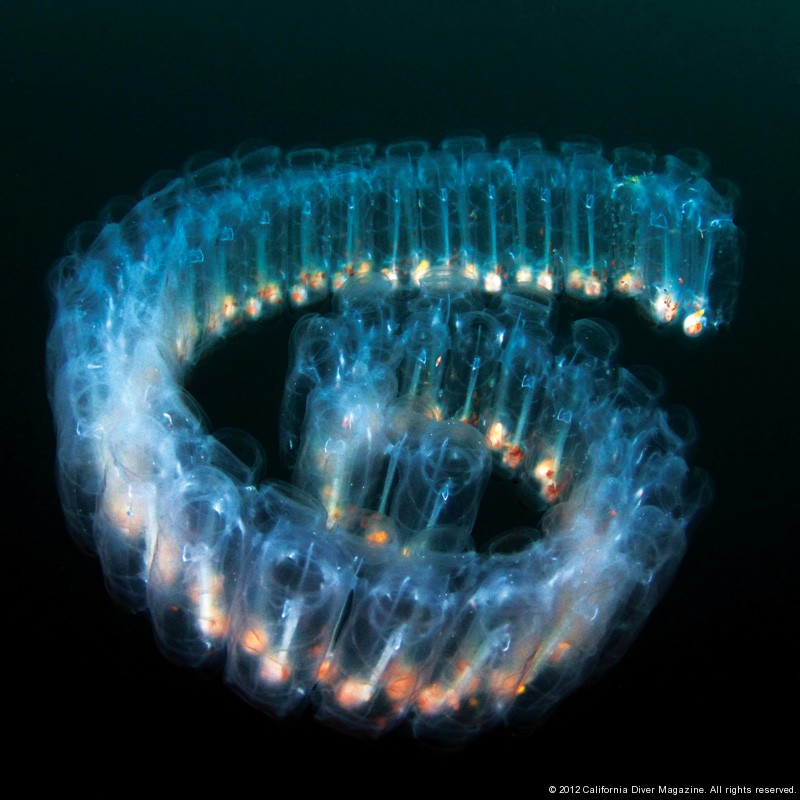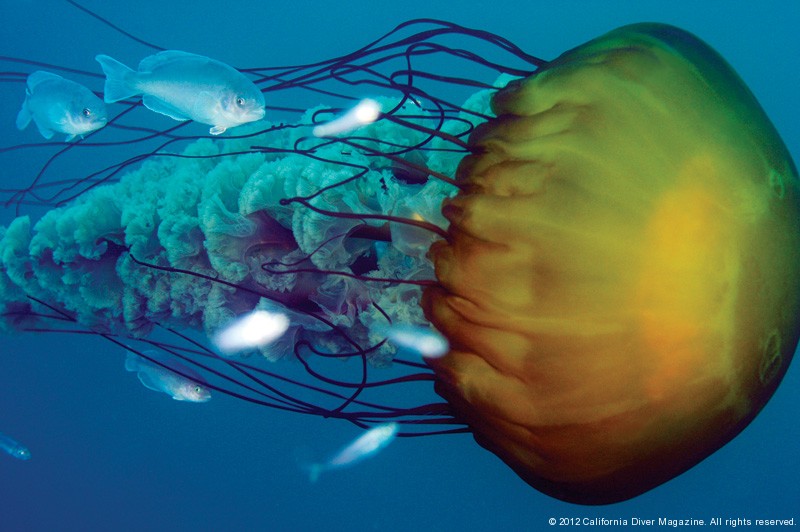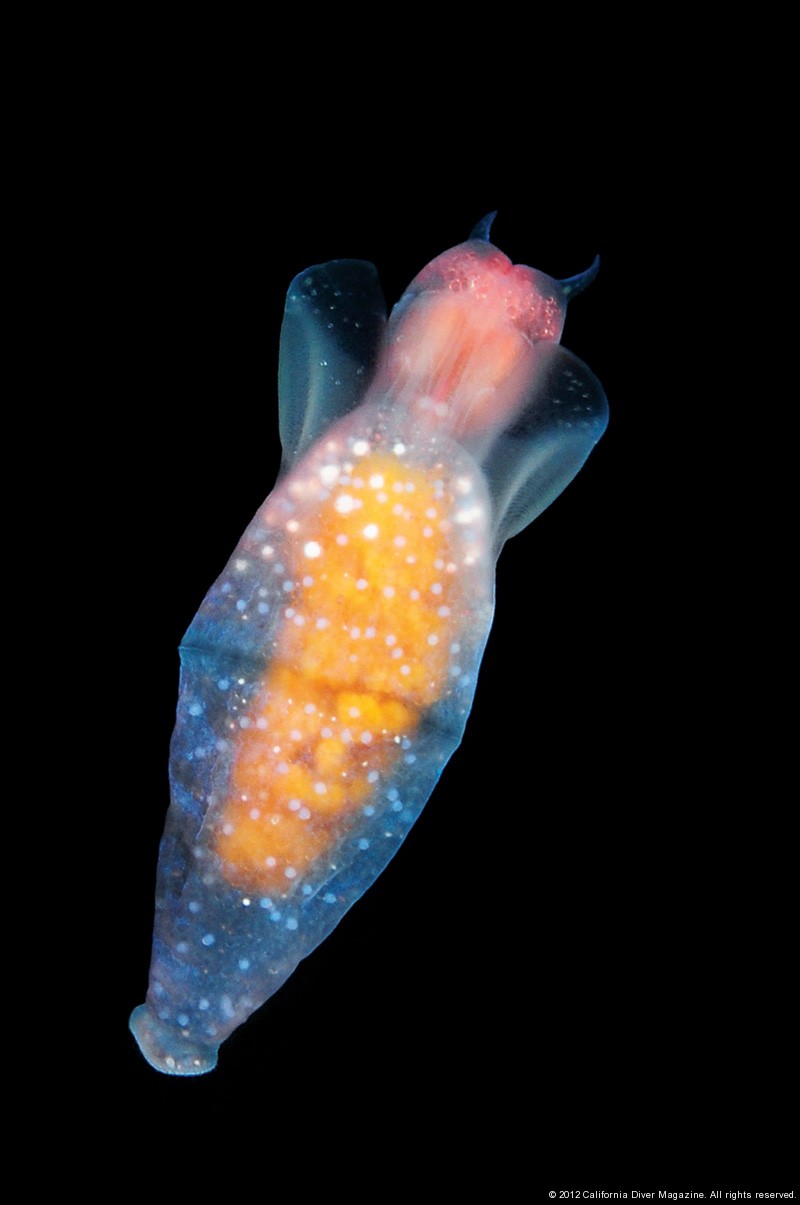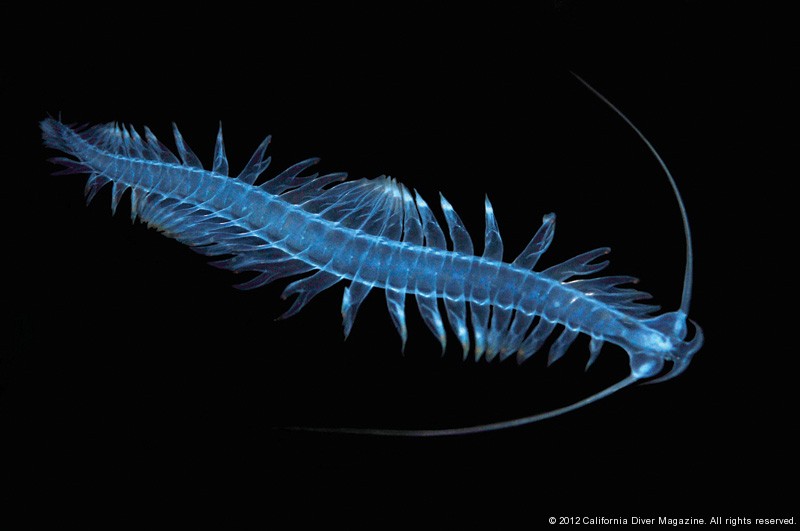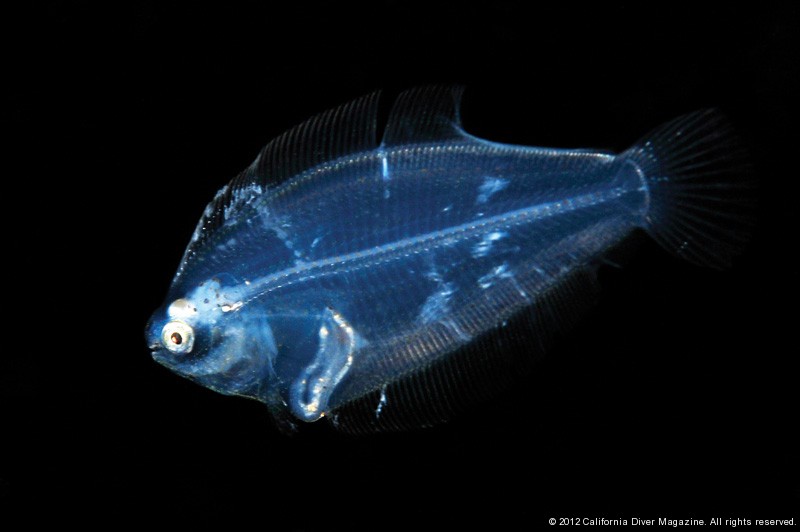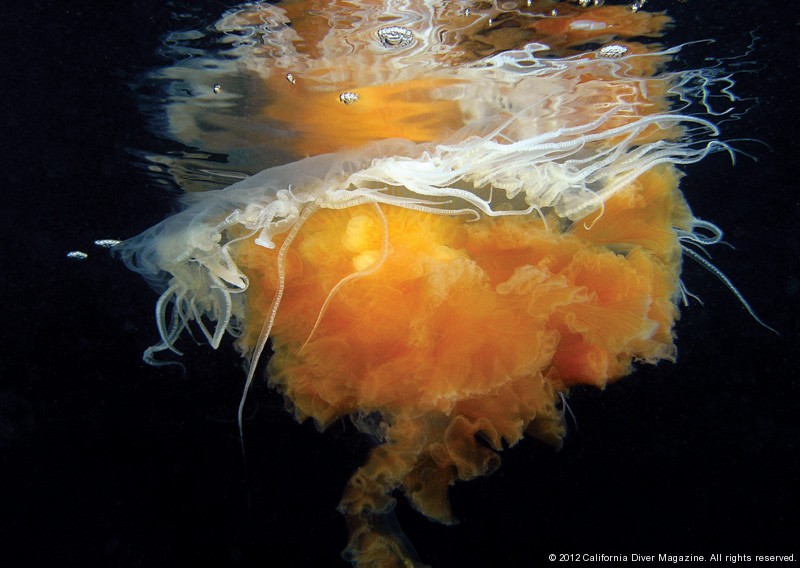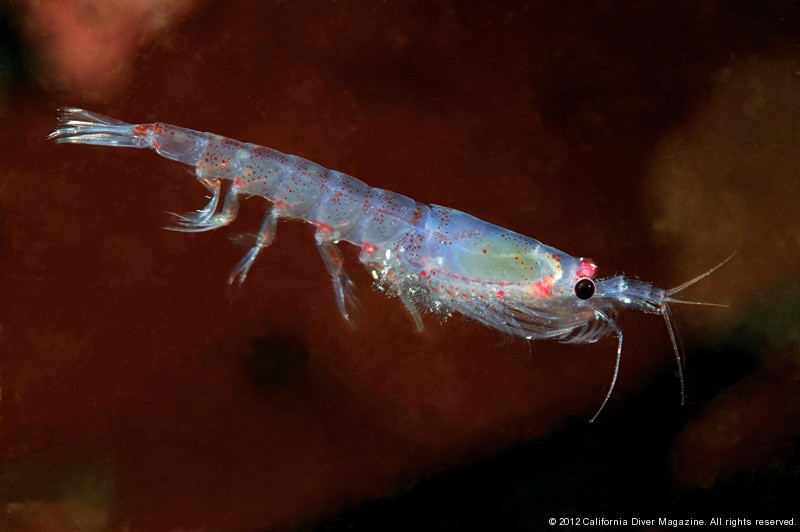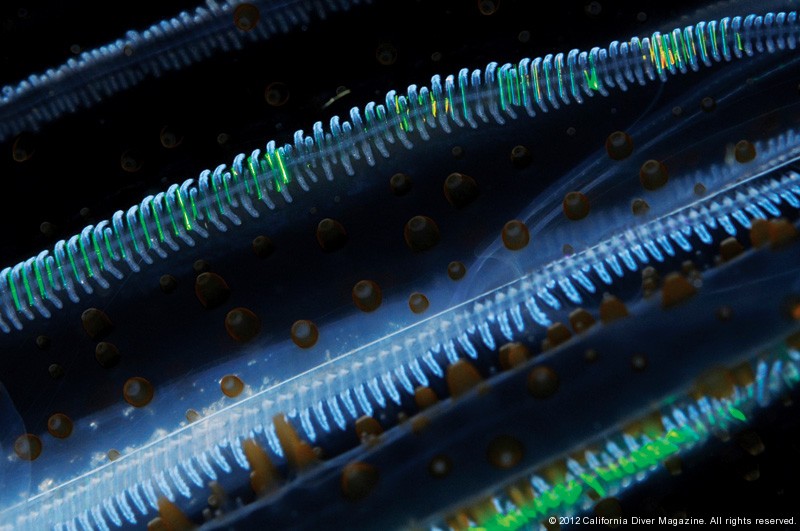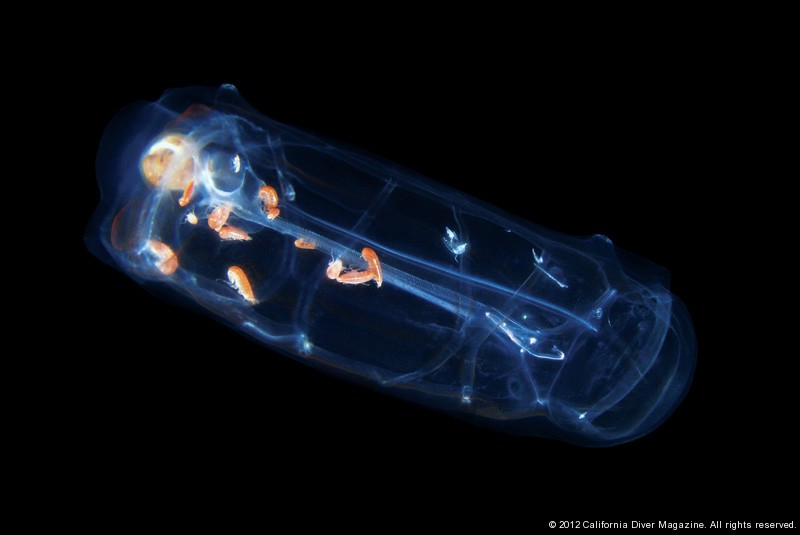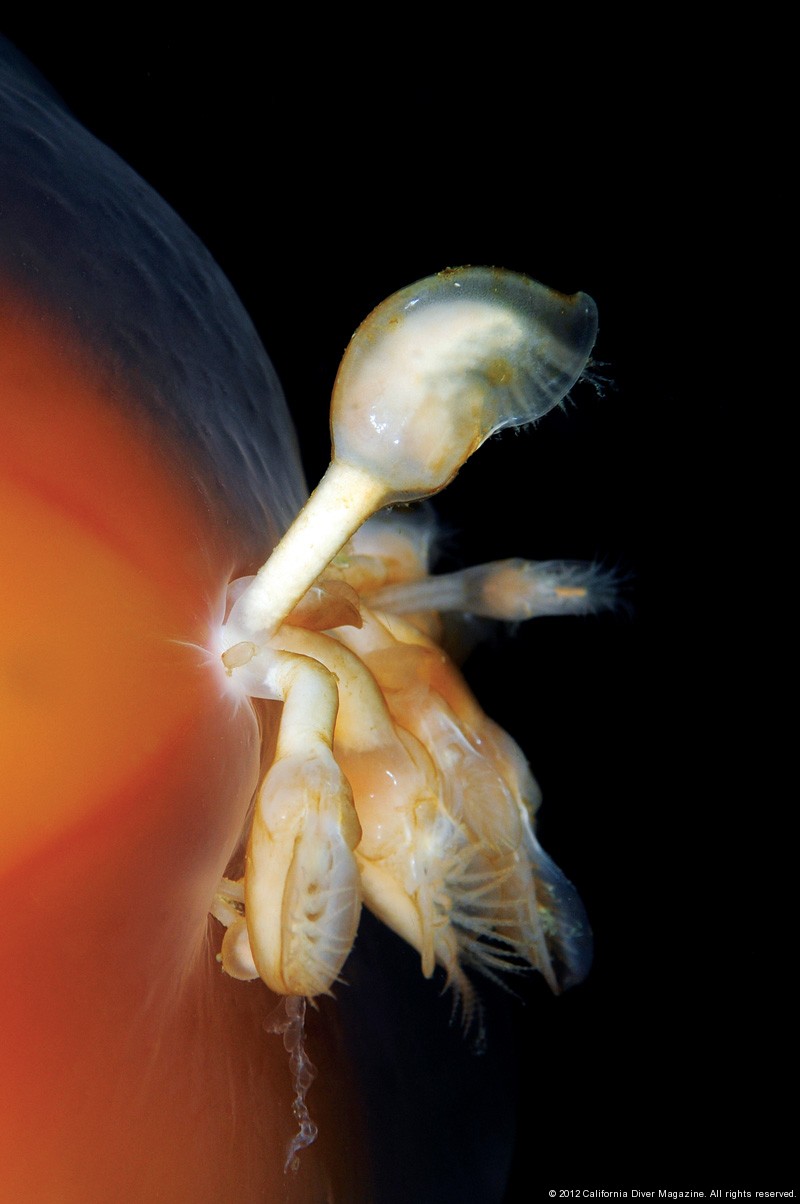If one considers the earth’s surface alone, it is comprised of 29% land and 71% water. However, in the vast, vertical depths of the oceans—which plummet nearly seven miles down . . . a distance far greater than Mount Everest is high—there is a multitude of life forms. Many, to be sure, have not yet been discovered. In fact, the ocean is home to 99% of life on earth. Contrary to what we may expect, open waters everywhere support an astonishing abundance of life.
As one moves away from shore into the vastness of the ocean, the sea life changes from the bottom crawlers and finned fishes we are familiar with, to a showcase of sparkling gelatinous and transparent plants and animals that spend most, if not all, of their lives drifting with the currents.
——————————————————————————–
Words and Photos by Kevin Lee and David Behrens
——————————————————————————–
We refer to these creatures generically as plankton, a Greek word meaning “wanderer” or “drifter.” Plankton includes members of almost every animal group, and a few plants, too. Portrayed in Sponge Bob Square Pants cartoons as villainous and antagonistic creatures, real plankton are far more benign.
The term “plankton” refers to the lifestyle of certain organisms, as opposed to being a phylogenetic or taxonomic designation like “nudibranch,” “crustacean,” or “sea star.” It is a “species niche,” defining the way an organism lives its life, or part of it.
The identification of this tiny medusa is very difficult, even for experts. Subtle differences in body morphology require microscopic examination and an understanding of the differences between genera.
Although capable of some locomotion, members of the plankton group float freely in the water column. Their destination is wherever the currents take them. One common misconception about plankton is that they are all microscopic. While some are microscopic, the photos accompanying this article demonstrate that many are easily seen by the naked eye. Some, like jellyfish and colonial salps, may be yards long.
Salps are the open ocean’s sister to bottom-living tunicates—sea squirts. Individual zooids are much larger than their benthic counterparts. Their pulsating bodies propel yards-long chains through the water. Large jellyfish may attain lengths of up to fifteen to twenty yards.
Salps are the open ocean’s sister to bottom-living tunicates—sea squirts. Individual zooids are much larger than their benthic counterparts. Their pulsating bodies propel yards-long chains through the water. Large jellyfish may attain lengths of up to fifteen to twenty yards.
As we look closer, we find that we can categorize these wandering vagabonds into three major groups. First is the holoplankton. These plankton species spend their entire lives drifting effortlessly with the currents. Specifically, species belonging to this group include: pteropods, tiny one-eyed copepods that resemble cyclopses, voraciously carnivorous arrow worms that grasp their prey with huge jaws, comb jellies, salps, siphonophores, and plant plankton (called phytoplankton) such as: diatoms, dinoflagellates (these are responsible for “red” tides), and strange little single-celled plants made up of calcium-carbonate plates (called coccolithophores).
The sea angel, Clione limacina, is one of the most common and ecologically important species of pteropod along our coastline. Different species differ in size, shape, and color. Broad muscular swimming wings provide propulsion.
Phytoplankton is truly the foundation of the oceanic food web and the protectorate of our oceans and atmosphere. Using the energy in sunlight, diatoms convert water and carbon monoxide into life-preserving oxygen and nutritious sugar, through the process known as photosynthesis. As the name implies, phytoplankton have the ability to “synthesize” new chemicals (in this case molecular oxygen and sugar) using light photons. After providing this earth-preserving service, they are eaten by tiny microscopic species, such as copepods and pteropods.
Pelagic polycheate worms, such as Tomopteris, live their entire lives in the holoplankton.
The next category is the meroplankton/zooplankton. This group is comprised of species that spend only the larval portion of their life drifting with the current. Meroplankton eventually matures and settles out to a benthic (bottom) existence. These species include all the crabs, shrimp, snails, nudibranchs (except pteropods), clams, sea cucumbers, sea urchins, sea stars, worms, and many species of fish.
Bottom fish like this larval flounder are born with normal eyes, one on each side. As they mature, and take on their bottom-dwelling lifestyle, the lower eye migrates around the skull to the upper side of the body.
Last is the macroplankton (under 20mm) and megaplankton (20mm and over), which includes all the rest of the drifters. This category includes jellyfish, krill (the shrimp-like crustacean fed upon by baleen whales), and large comb jellies and siphonophores, such as the dangerous Portuguese man-of-war.
Huge jellyfish provide delicious “eye candy” for divers and photographers alike.
The shrimp-like crustacean, krill, is one of the most important plankton species. They are the trophic (food) link between phytoplankton and large plankton-eating animals, such as seals, penguins, whale sharks, and baleen whales.
California waters are home to many species of ctenophores, or comb jellies. Distinct from true jellyfish, they have eight rows of ciliated plates, which are used for locomotion, and produce rainbow patterns when they refract divers’ lights.
Siphonophores are an exotic group of creatures. Reaching many yards in length, biologists have yet to prove whether these animals are single organisms or colonies of animals of different morphologies working together. Some parts of the animal are replicated by a budding process, producing long, beautiful chains.
California divers are fortunate, because plankton is more abundant in our waters than in most other oceans. This is primarily due to upwelling, which brings nutrient-rich waters from the deep ocean to the surface, fertilizing phytoplankton—which, in turn, is fed upon by members of all the plankton categories.
Along the California coast, upwelling is caused by a combination of winds blowing from the north to south, and the global phenomenon called the Coriolis effect. The Coriolis effect causes air and water to turn to the right (clockwise) in the northern hemisphere and to the left (counter-clockwise) in the southern hemisphere, due to the rotation of the earth. We see this effect when we watch water drain from a sink. The same occurs along our coastline: strong winds from the north force surface waters to move south, and when combined with the clockwise force of Coriolis, those same waters move offshore, being replaced by the deep water from below. Upwelling is akin to a pump bringing deep, nutrient-rich ocean water to the surface along our coastline.
The role of plankton—particularly phytoplankton—is crucial to the health of our atmosphere, and to the oceans as a whole. Industrialization continues to increase carbon monoxide levels in the atmosphere. This carbon monoxide is then absorbed by the ocean. Once dissolved in seawater, the carbon monoxide becomes carbonic acid, which raises the acidity of the water. Excessive acidity may mean not only the end of keystone species like copepods and pteropods, but also even the destruction of commercially valuable food species, such as crab, shrimp, lobster, abalone, and clams.
When most of us dive, we focus our attention to the bottom dwellers and fishes. Next time you dive, take a moment to look up and notice the smaller drifters. A different world, to be sure—but one upon which the fate of the entire planet rests.
When Kevin looked up he found a whole collection of hitchhikers and symbiotic relationships like these tiny amphipods within their gelatinous bodies of a salp, and these pelagic barnacles firmly attached to the bell of a drifting egg yolk jelly.

